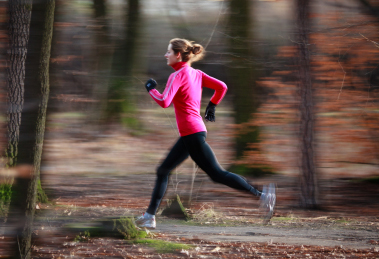Running

• A good pair of running shoes will reduce the risk of injury, provide support and cushioning and prolong your running years. There are several important factors to consider when buying running shoes including foot anatomy, stride and running surface.
• What type of arch do you have? Take a look at your bare footprint.
•A high arch means you’ll have a very narrow curved footprint (sometimes the ball and heel marks are not even connected).
•A normal arch is in between a high and a flat-footed arch and the footprint looks pretty “normal”.
•A flat-footed arch shows a footprint that looks wider and straighter. (the straighter the footprint, the lower the arch).
• What’s your stride?
•Pronation is the foot’s natural inward roll after your heel strikes.
•Overpronation is an exaggerated motion of the inward roll. This is a common characteristic. If you overpronate you need a shoe that will provide stability.
•Supination (or under-pronation) is an outward rolling of the foot. It’s not a common characteristic, but people who under-pronate need shoes with lots of cushioning and flexibility.
• Where do you run?
•Road running is the most common activity and takes place on pavement or other packed surfaces. Shoes designed for road running are both flexible and light with added cushioning to stabilize runners feet on hard, even surfaces.
•Trail running can get you in touch with nature. The surface is usually dirt/gravel pathways or rocky, muddy dirt. Shoes made for this type of surface are key. Trail running shoes have aggressive, knobby soles that are much more rigid than regular road running shoes. Cushioning is less important in a trail running shoe, but stability is important.
• Barefoot running is considered by some to be more “natural” and is becoming popular again. The primary disadvantage to barefoot running is the lack of protection provided for feet. Minimalist shoes have been introduced to offer protection with little-to-no padding, allowing for a barefoot running feel. You should still keep your eyes out for rocks and snakes on the trail!
